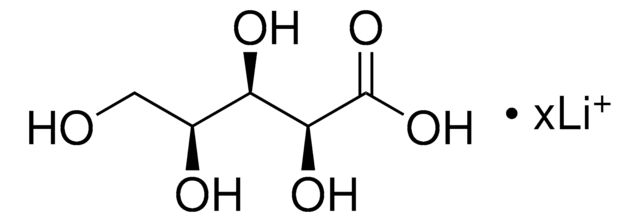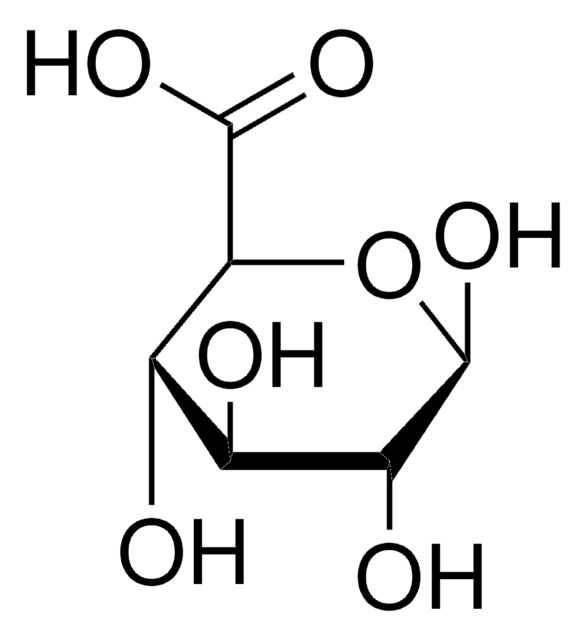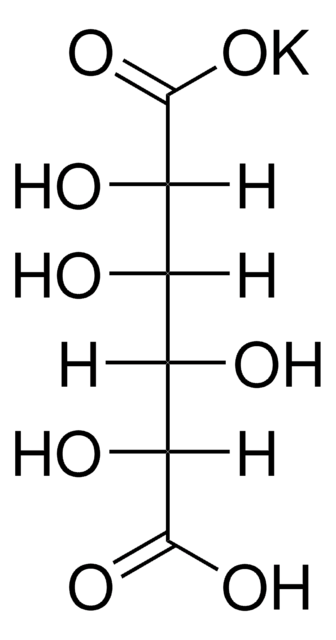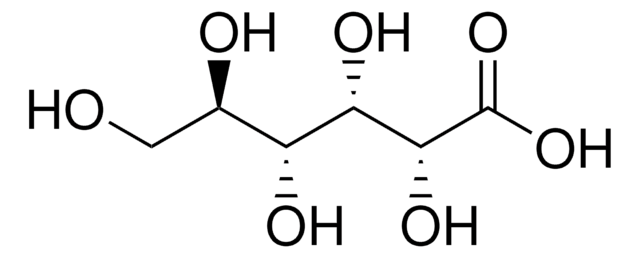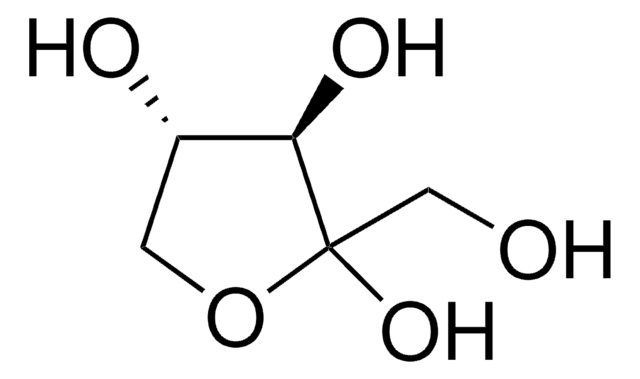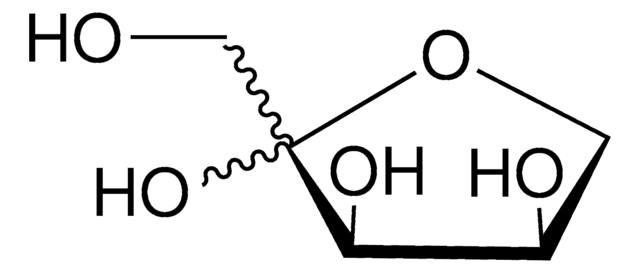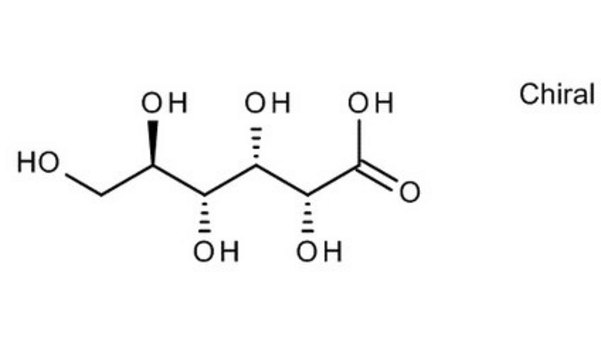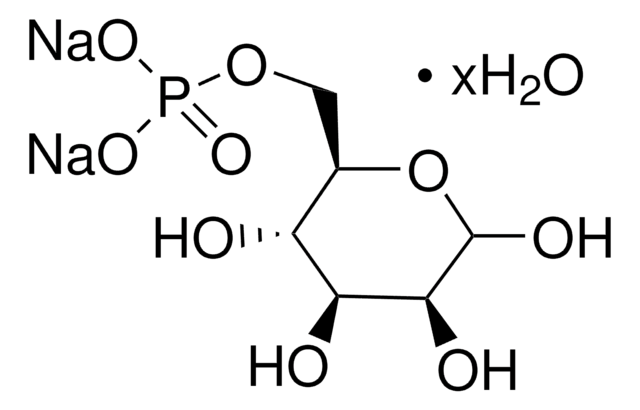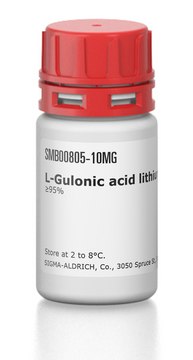73671
D-Xylonic acid lithium salt
≥95.0% (TLC)
Synonym(s):
Lithium D-xylonate
Sign Into View Organizational & Contract Pricing
All Photos(1)
About This Item
Empirical Formula (Hill Notation):
C5H10O6 · xLi+
CAS Number:
Molecular Weight:
166.13 (free acid basis)
MDL number:
UNSPSC Code:
12352201
PubChem Substance ID:
NACRES:
NA.25
Recommended Products
Quality Level
Assay
≥95.0% (TLC)
form
powder or crystals
optical activity
[α]/D 18±2° in H2O
color
white to off-white
storage temp.
2-8°C
SMILES string
OC[C@@H](O)[C@H](O)[C@@H](O)C(O)=O
InChI
1S/C5H10O6/c6-1-2(7)3(8)4(9)5(10)11/h2-4,6-9H,1H2,(H,10,11)/t2-,3+,4-/m1/s1
InChI key
QXKAIJAYHKCRRA-FLRLBIABSA-N
Biochem/physiol Actions
Metabolite of pentose and glucuronate interconversions
Other Notes
To gain a comprehensive understanding of our extensive range of Monosaccharides for your research, we encourage you to visit our Carbohydrates Category page.
Storage Class Code
11 - Combustible Solids
WGK
WGK 3
Flash Point(F)
Not applicable
Flash Point(C)
Not applicable
Choose from one of the most recent versions:
Certificates of Analysis (COA)
Lot/Batch Number
Don't see the Right Version?
If you require a particular version, you can look up a specific certificate by the Lot or Batch number.
Already Own This Product?
Find documentation for the products that you have recently purchased in the Document Library.
Wei Niu et al.
Journal of the American Chemical Society, 125(43), 12998-12999 (2003-10-23)
The lack of a route to precursor 1,2,4-butanetriol that is amenable to large-scale synthesis has impeded substitution of 1,2,4-butanetriol trinitrate for nitroglycerin. To identify an alternative to the current commercial synthesis of racemic d,l-1,2,4-butanetriol involving NaBH4 reduction of esterified d,l-malic
Yvonne Nygård et al.
Metabolic engineering, 25, 238-247 (2014-07-30)
D-xylonate is a potential platform chemical which can be produced by engineered Saccharomyces cerevisiae strains. In order to address production constraints in more detail, we analysed the role of lactone ring opening in single cells and populations. Both D-xylono-γ-lactone and
Huaiwei Liu et al.
Bioresource technology, 115, 244-248 (2011-09-16)
An engineered Escherichia coli was constructed to produce D-xylonic acid, one of the top 30 high-value chemicals identified by US Department of Energy. The native pathway for D-xylose catabolism in E. coli W3110 was blocked by disrupting xylose isomerase (XI)
Olga Gorte et al.
Biotechnology for biofuels, 13(1), 181-181 (2020-12-10)
Biotechnologically produced microbial lipids are of interest as potential alternatives for crude and plant oils. Their lipid profile is similar to plant oils and can therefore be a substitute for the production of biofuels, additives for food and cosmetics industry
Note on D-xylonate utilization by ascomycetous and basidiomycetous yeasts.
Van Der Walt, J. P. and Steyn, R. L.
Systematic and Applied Microbiology, 13, 192-193 (1990)
Our team of scientists has experience in all areas of research including Life Science, Material Science, Chemical Synthesis, Chromatography, Analytical and many others.
Contact Technical Service